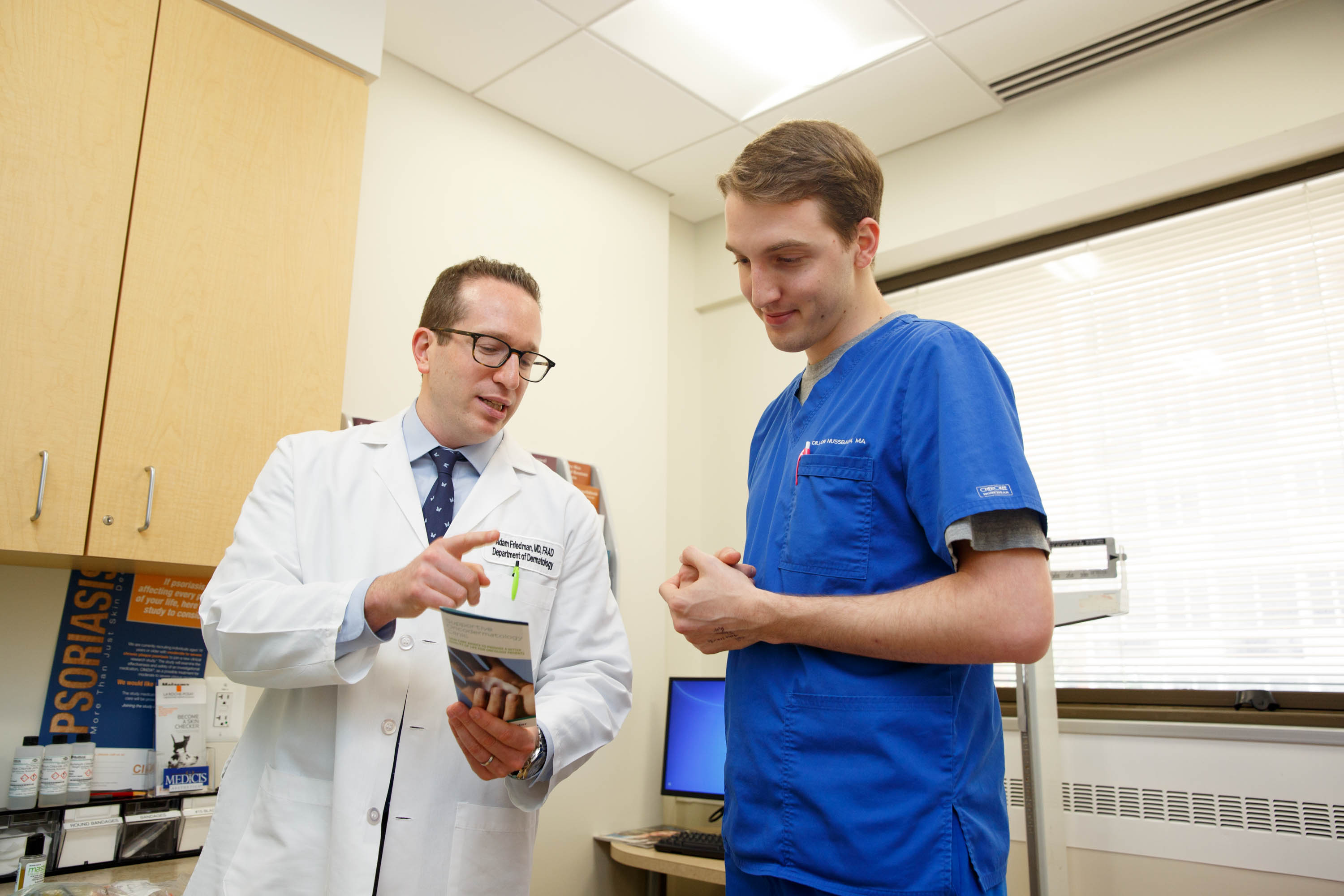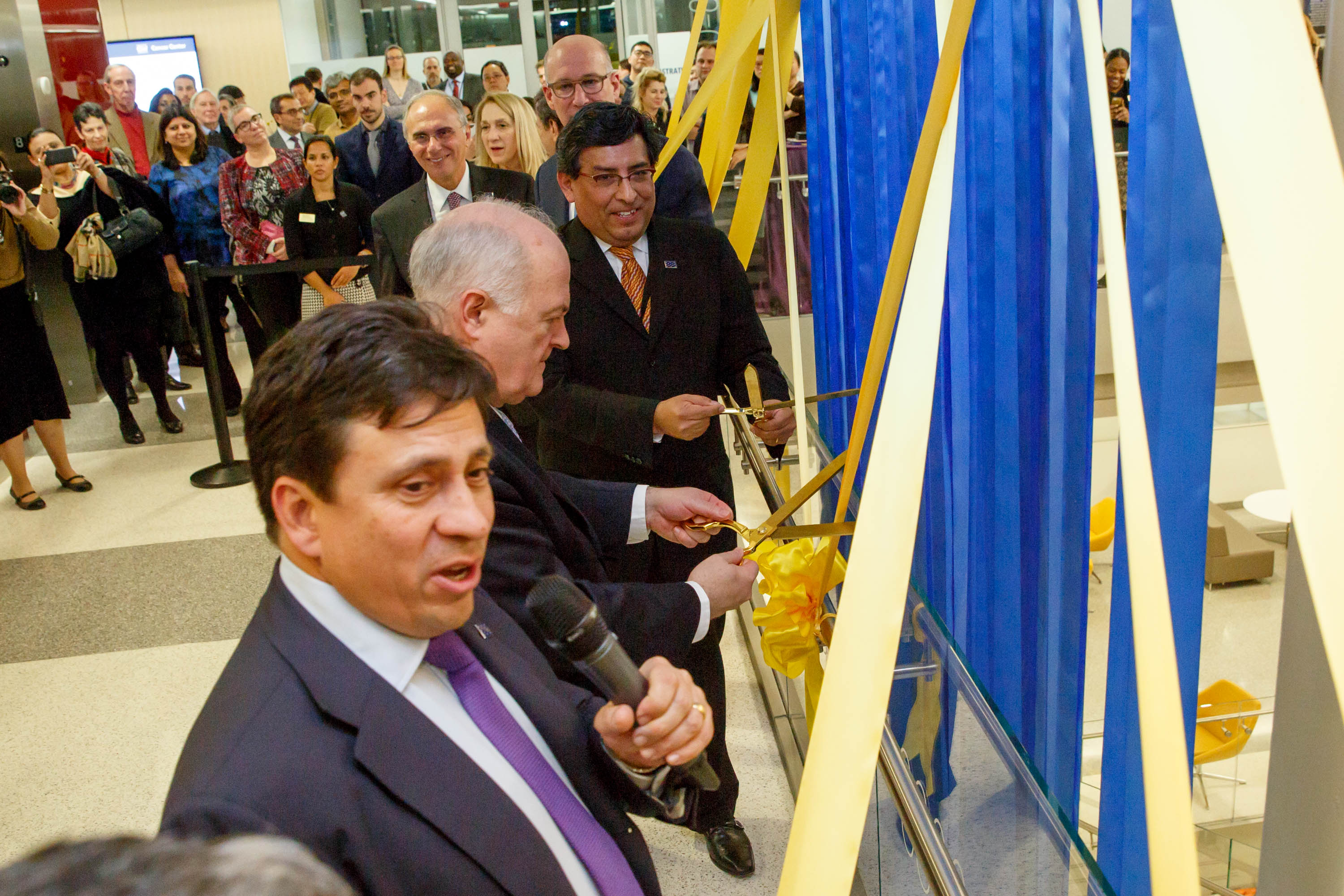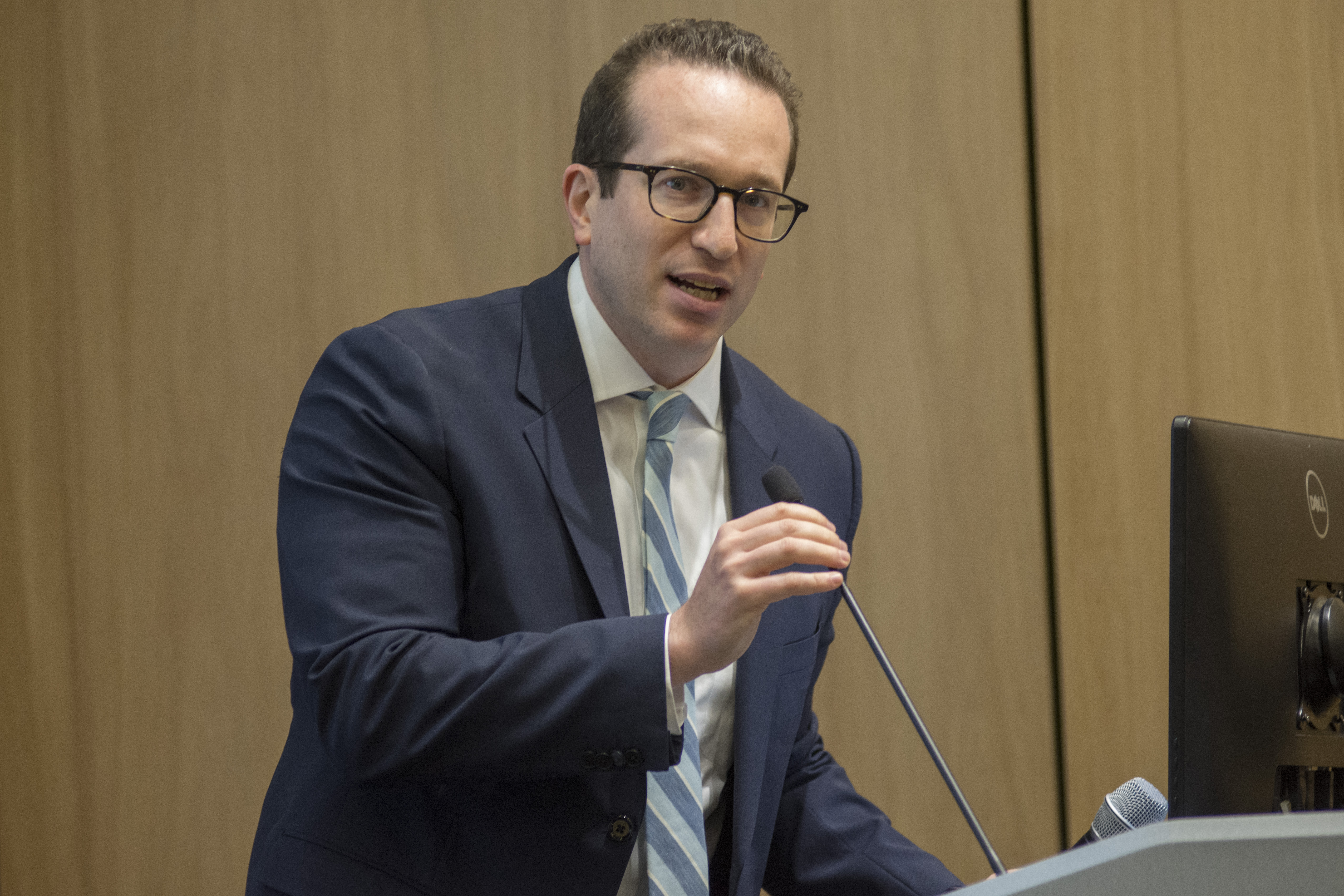By Kristen Mitchell
Cancer patients dealing with the often painful and unrecognized impacts of chemotherapy and other treatment on the skin, hair and nails have a new place at George Washington University to turn to for help.
The GW Cancer Center launched the Supportive Oncodermatology Clinic in May, supported in part by La Roche Posay, a company that makes dermatological skin care products. The clinic caters to cancer patients who face a complicated mix of skin issues from painful hand cracking and acne-like lesions on the face, back and hands.
Adam Friedman, an associate professor of dermatology and director of supportive oncodermatology, said there is often a divide between how oncologists view these skin conditions and how the patients feel about them. The oncologists are focused on treating the cancer, and rightfully so, and often welcoming these side effects as they can be a sign that the medication is working.
Published studies have shown, however, there is a disconnect between the physician and the patient with respect to how impactful and disabling these skin reactions can be. These side effects can even limit or scare people off from getting treatment, Dr. Friedman said.
“Very often people don’t feel cancer, they don’t feel anything. They know they have it, but they don’t feel anything,” Dr. Friedman said. “They feel the skin, and so that’s why there is a huge disconnect.”
These skin conditions can affect a patient’s quality of life and confidence, Dr. Friedman said. If patients feel embarrassed about their skin, they are unlikely to go out and do the activities they used to do before they received treatment.
“We’re curing cancer, we’re extending life, but what is that life really going to be like? A big complaint is the skin issues that can really limit someone’s day to day,” he said.
Dr. Friedman hopes the Supportive Oncodermatology Clinic will help address those underserved needs. The clinic is the only dermatology clinic specifically for cancer patients in the D.C. area. There are only a handful of similar clinics in the country, according to the GW Cancer Center.
Supportive oncodermatology is a growing field, Dr. Friedman said. As cancer treatment and targeted therapies improve, the number of cancer survivors who require specialized care will grow.
“When dermatology residents who help treat clinic patients leave GW, they will be equipped to manage this type of care,” said Dr. Friedman, who also serves as the residency program director for the department.
Hair loss is a well-known side effect of chemotherapy, and it occurs because chemotherapy kills cells that turn over quickly like those in the hair, skin and nails. The same process that causes patients to lose their hair also causes the skin to become dry and cracked and damages nail growth, making the fingernails more vulnerable to peeling back and even infection. Many of the newer, more targeted and cancer specific treatments, while more effective, are almost guaranteed to cause skin issues and the majority of these targets are also found in the skin. Supportive oncodermatology helps patients enjoy the lives they fought so hard for, Dr. Friedman said.
“It’s not life with an asterisk,” he said. “Survivors should not have to accept that their new life requires persistent skin, hair, and nail issues. Our focus is also on making survivorship more livable.”
Dr. Friedman hopes to start seeing cancer patients in the supportive oncodermatology clinic before they begin treatment to talk about side effects and provide them with samples of products that could help them manage and alleviate symptoms. Studies have shown that starting to use products like minoxidil before treatment could help prevent hair loss and some lotions which contain the ingredient Urea could be effective in preventing cracked, dry hands.
“I want to treat the problems,” he said. “But I want to hopefully limit them in the first place.”
The clinic, located on the second floor of the Medical Faculty Associates building on 22nd and I streets NW, will be open on the third Monday of every month from 1 p.m. to 4 p.m. in the existing clinical dermatology space. Patients who need timely care will be accommodated sooner if needed, Dr. Friedman said.
Patients referred to the clinic will be seen by Dr. Friedman and a team of dermatology residents. They are asked to bring detailed information about their treatment and medications. Because dermatology is a visual field and these skin conditions can wax and wane it’s helpful to have photos, Dr. Friedman said.
“A lot of these eruptions are short lived but they can be recurring,” he said. “Some of that can come and go so having pictures is very helpful.”
Earlier this year La Roche Posay donated $25,000 to support the clinic. Dr. Friedman said the clinic is a good example of how industry and academia can work together to achieve a common goal.
The clinic already is busy planning for future initiatives, which include training programs to teach patients how to use cosmetic makeup. Learning how to use makeup effectively has been shown to help survivors gain confidence during treatment and improve morale, Dr. Friedman said.
“You have survived, but what is this new life like if these persistent skin issues negatively impact your confidence, which in turn can limit activity,” Dr. Friedman said. “You kicked cancer’s ass, you should feel pretty good about it.”




